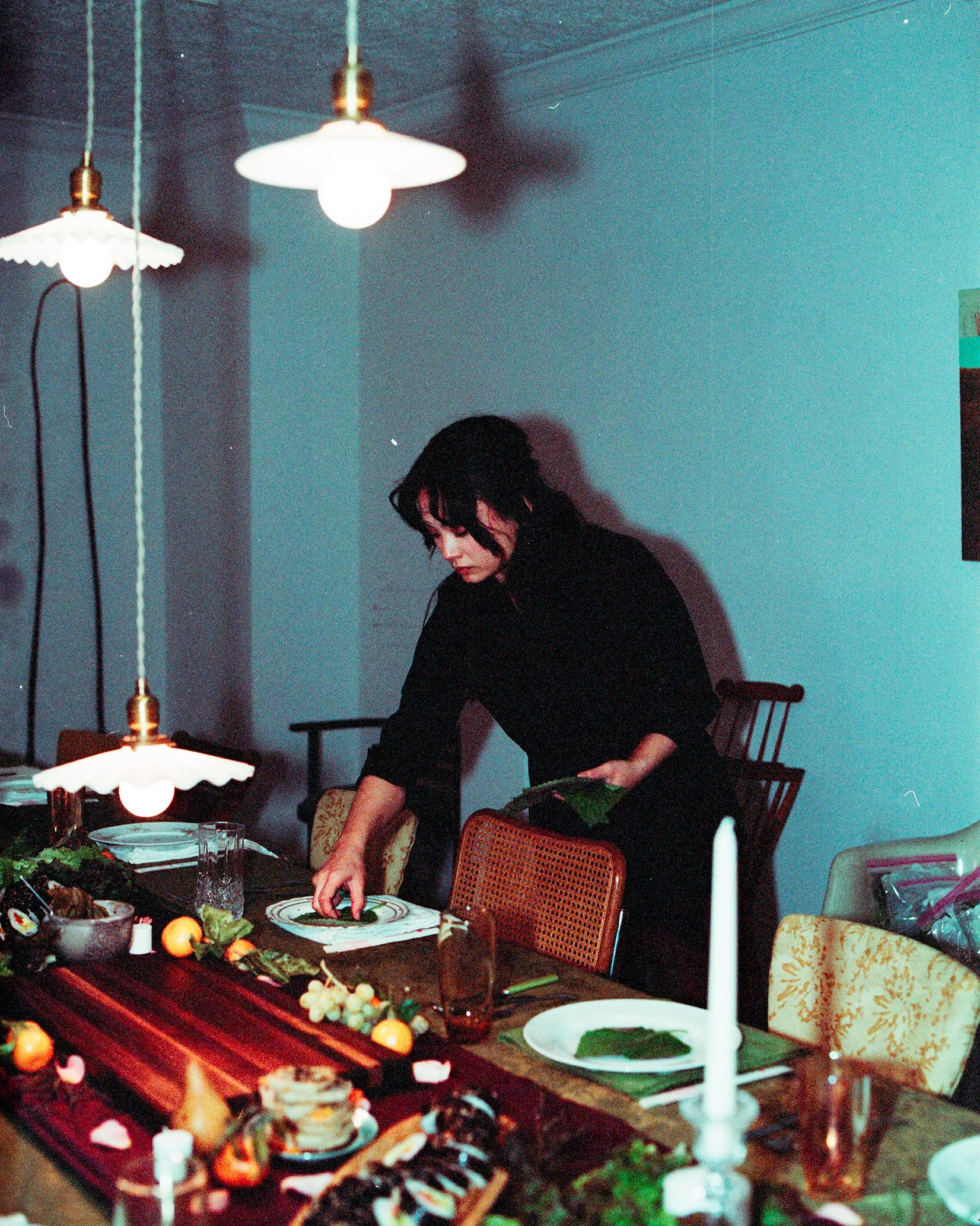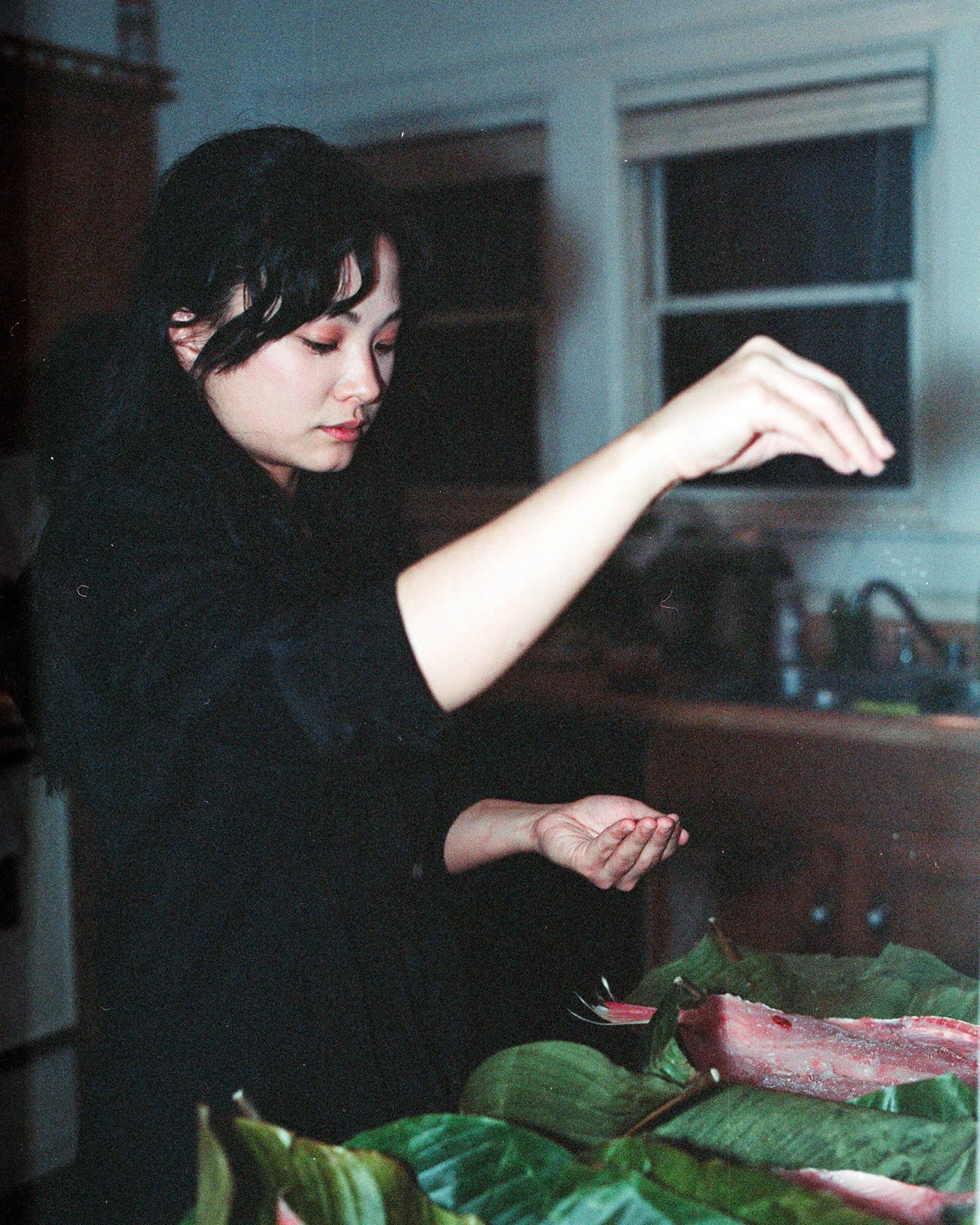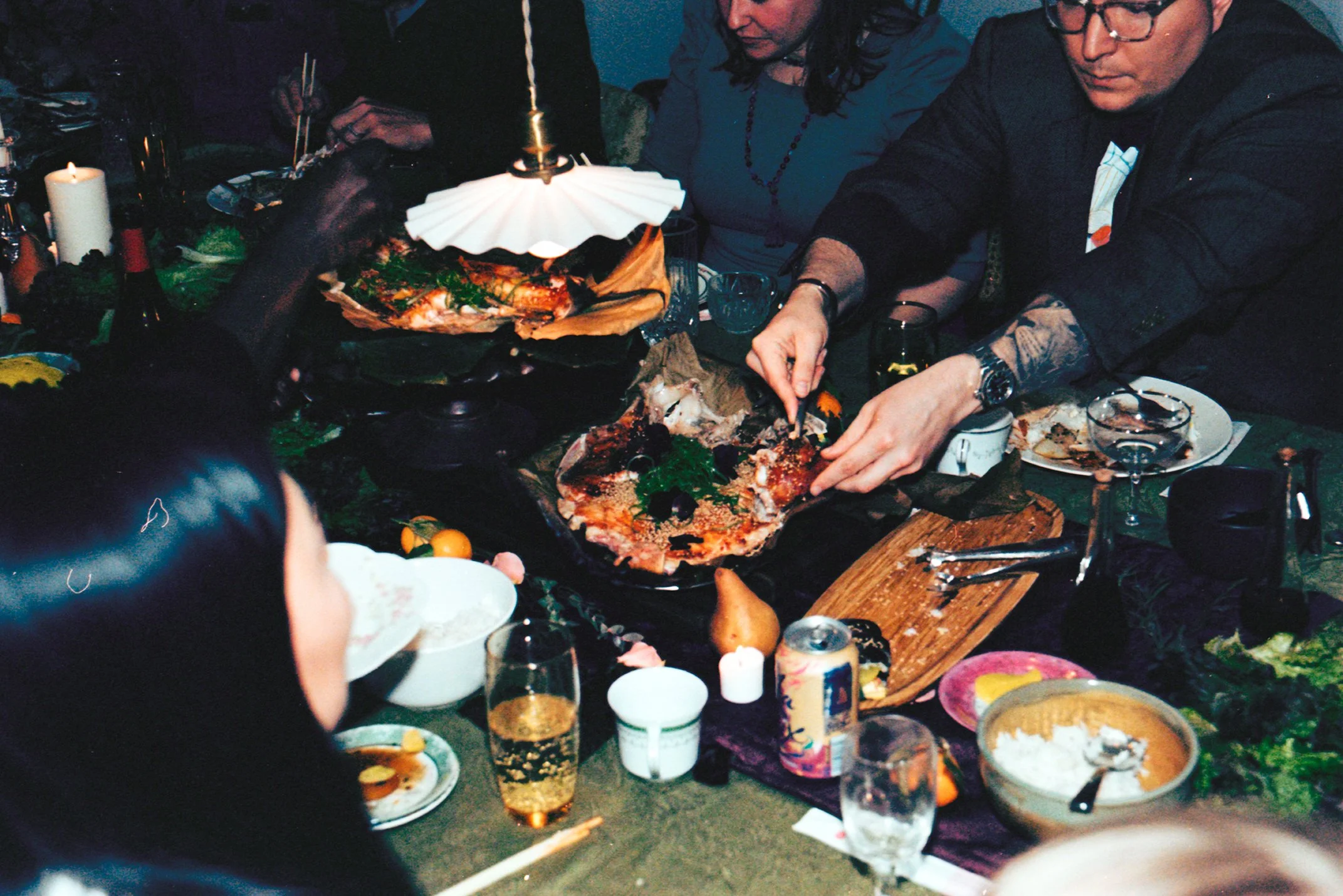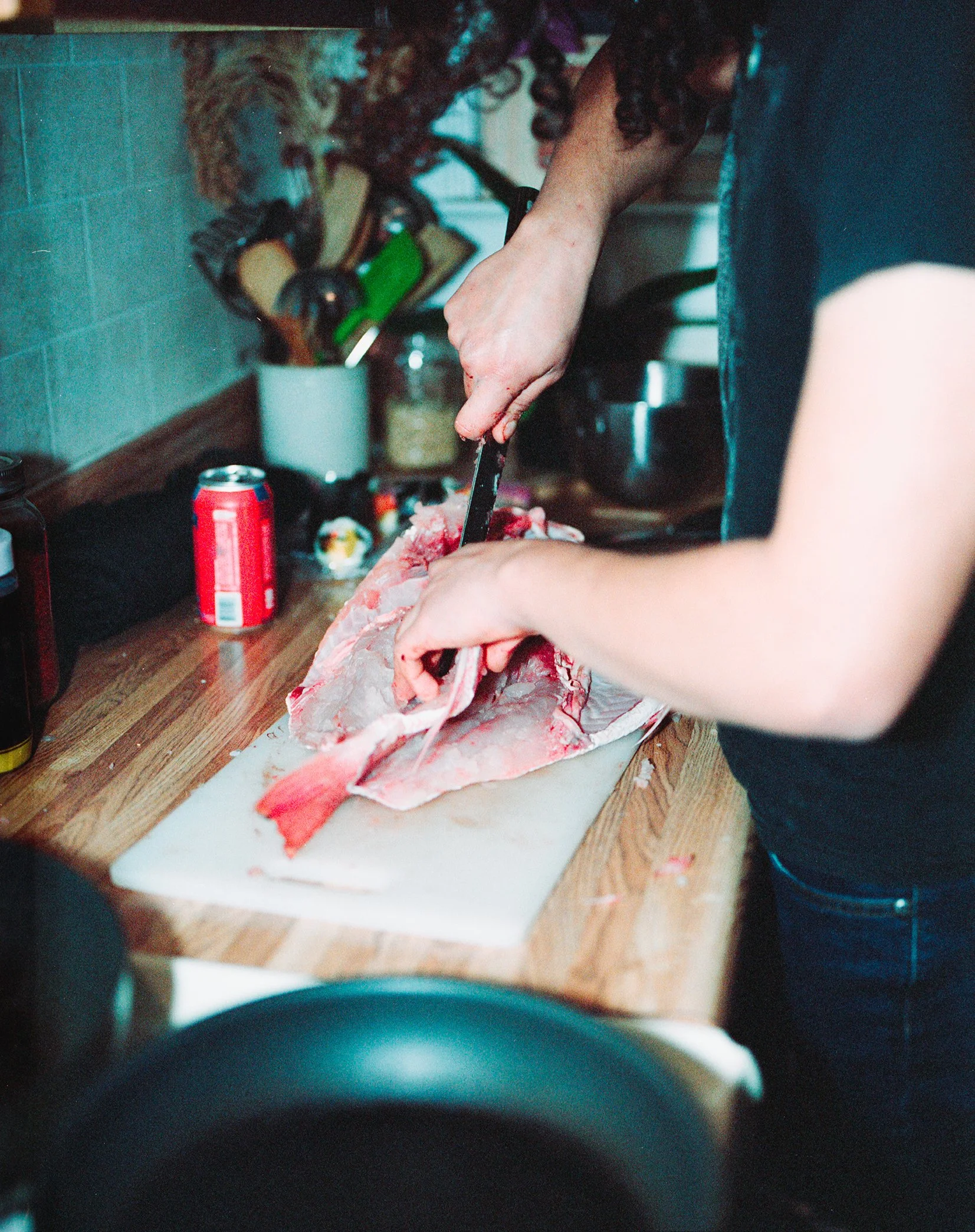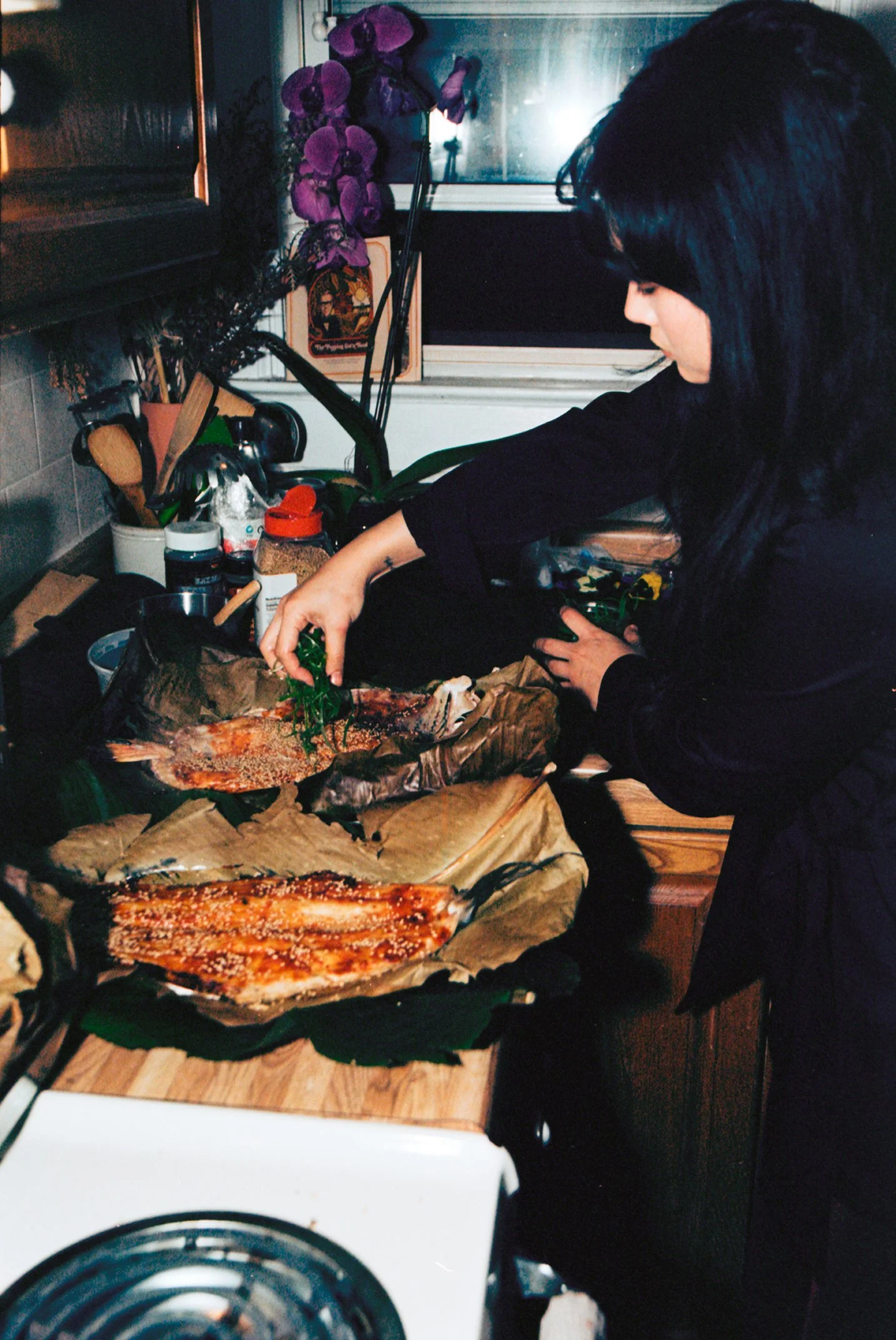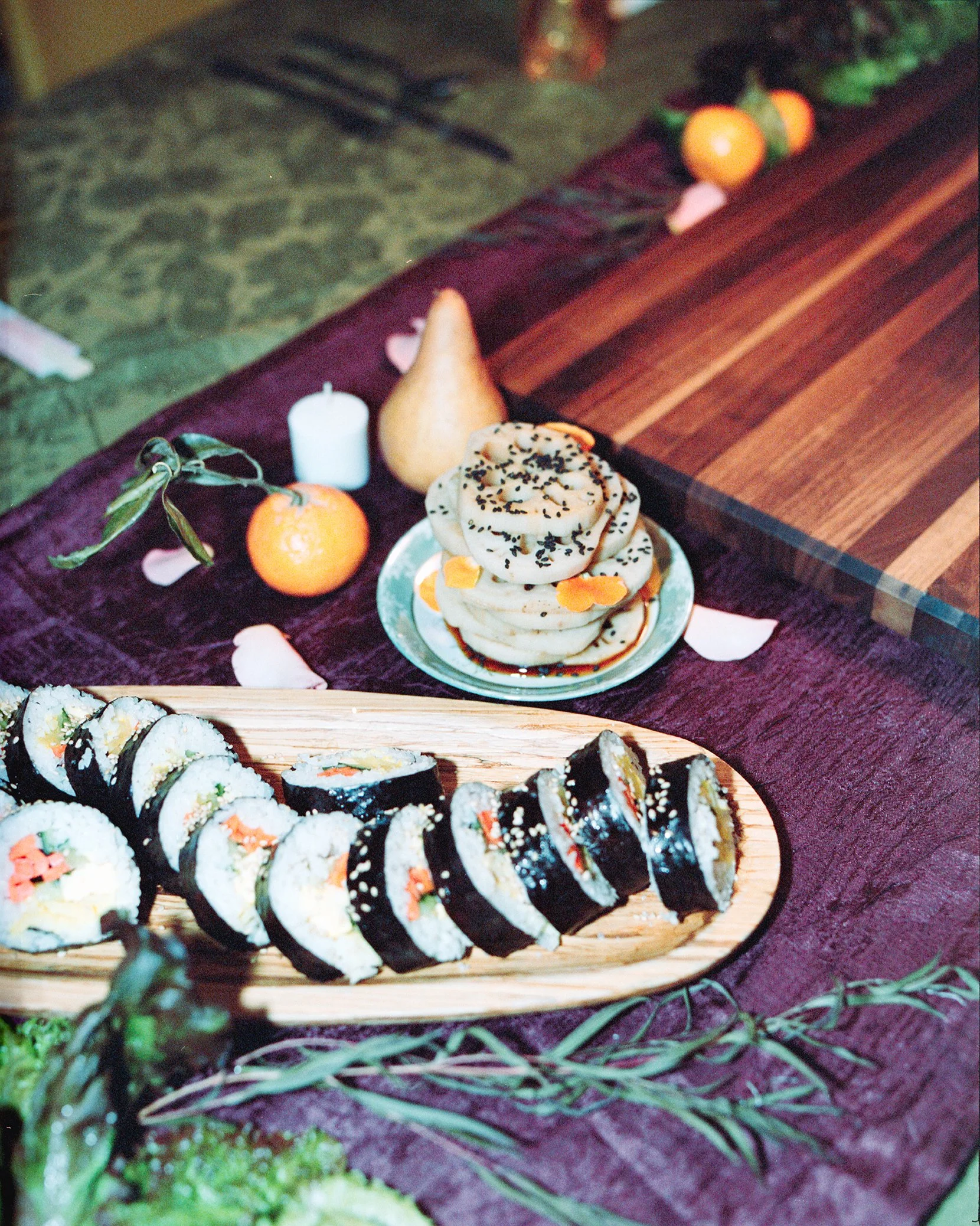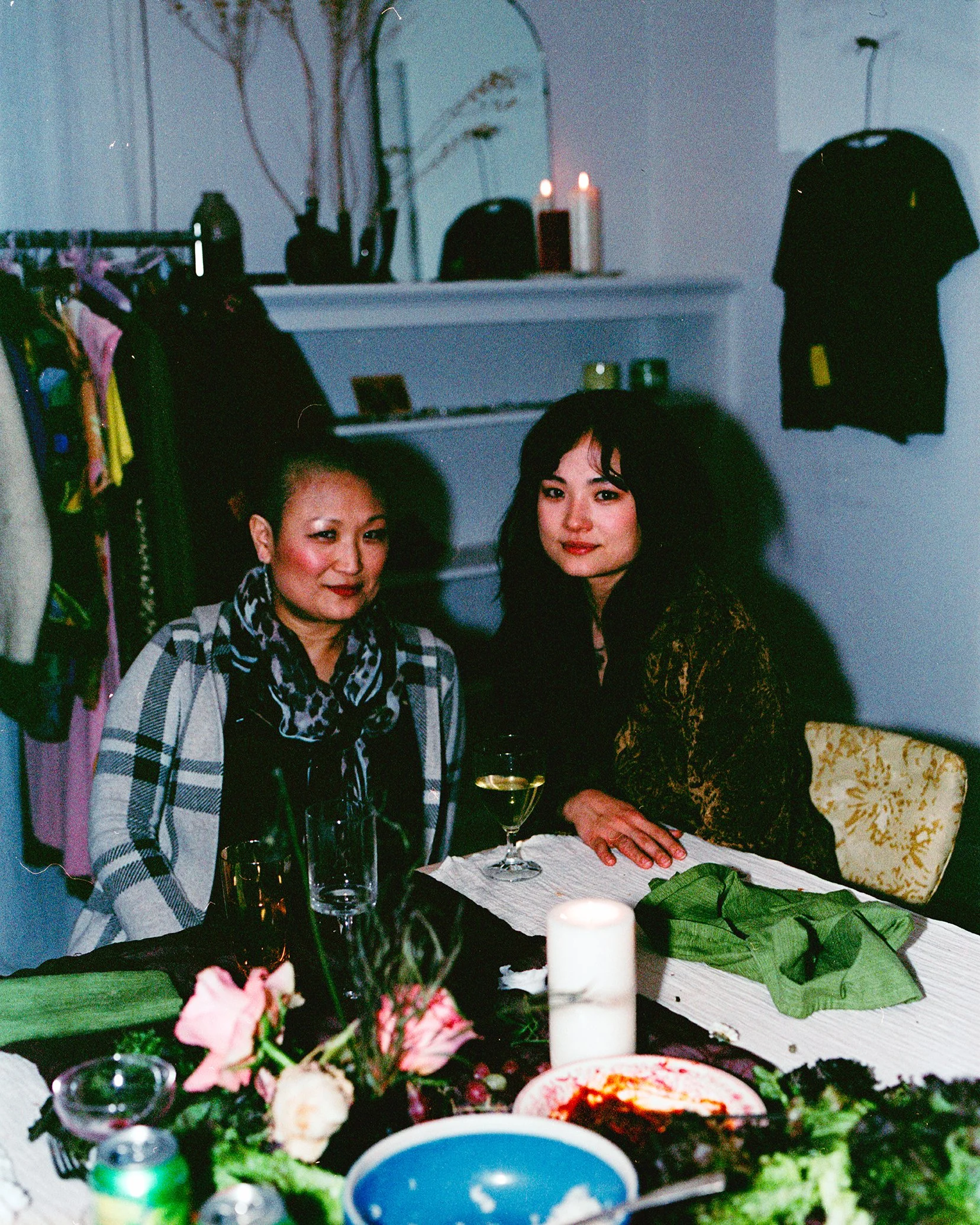Gyopo (교포)
Dinner with artist and cook Grace Seibert
Held Tuesday, December 13, 2022, Gyopo (교포) offered a traditional-ish Korean feast with vegetable-forward banchan and seafood by artist and cook Grace Seibert as part of Fair Market _ 2022. The evening included wine with sommelier Demian Hostetter and helped support future artist programming at Companion.
MENU
Sagol-gukmul/beef bone broth
Ssamjang
Cold yuzu and ginger Korean radish
Small marinated whole crab, pickled ginger
Dubu jorim/braised tofu with woodear mushroom
Vegetarian gimbap and braised lotus root
Whole snapper and mackerel in banana leaves
Tongbaechu-kimchi/napa cabbage kimchi, caramelized
Fresh winter greens kimchi
Bap/steamed rice
“Tteok con leche”
GYOPO (교포)
Gyopo (교포): ethnic Koreans living outside of Korea; definitely not “full” Korean.
Diaspora: the dispersion of any people from their motherland by direct or indirect force
Single, pregnant Korean mothers flooded the country following the end of the Korean War in 1953, with their white, male donors leaving their children to become orphans. The 70s and 80s were the largest influx of adoptees to be shipped out West – a tactic from the Korean government post-war to relieve the country of mixed-race children, gyopo.
Gyopo has been used as a neutral term. Gyopo can “other” and shame the Korean diaspora. We are ethnically Korean, we are sometimes not, and usually wavering in how we choose to identify. We are second generation Korean adoptees, like me, trying to stay connected to a motherland of which I do not belong. We are and we are not.
The path to learn the food of my mother’s land from which she was taken is not unique, but I believe becomes more defined as time blankets the pain of our diaspora. The food of a gyopo.
- GRACE SEIBERT
Documentation by Pink Bike Media


